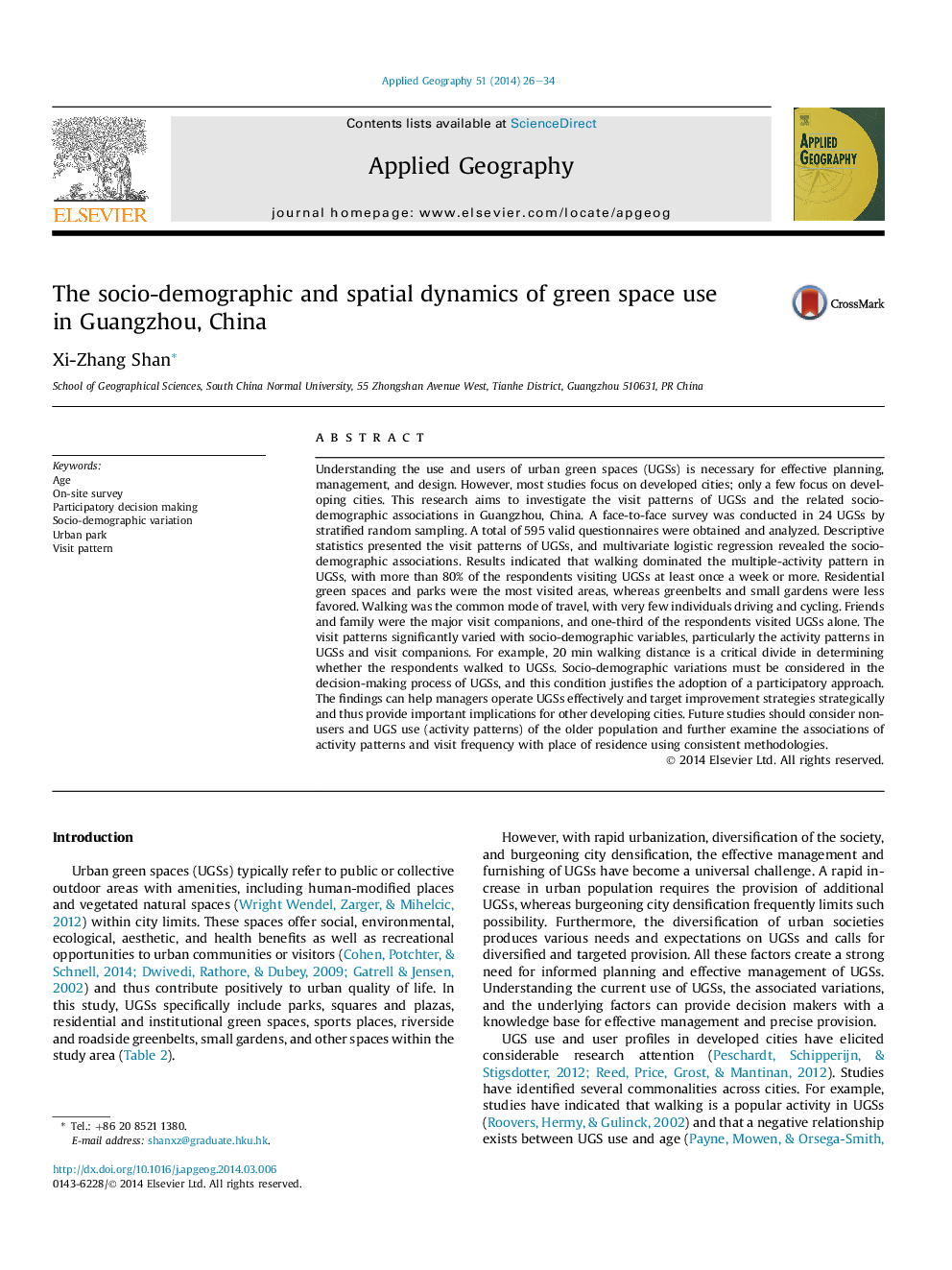| کد مقاله | کد نشریه | سال انتشار | مقاله انگلیسی | نسخه تمام متن |
|---|---|---|---|---|
| 83343 | 158718 | 2014 | 9 صفحه PDF | دانلود رایگان |
• Walking dominates the multiple-activity pattern in UGSs with significant variations.
• High frequency of visits to UGSs with few socio-demographic variations is revealed.
• The imbalance in the preferred types of UGSs needs to improve those underused sites.
• Walking is the common mode of travel to UGSs, but this applies mainly in 20 min.
• Participatory approaches could be useful for the decision-making process of the UGSs.
Understanding the use and users of urban green spaces (UGSs) is necessary for effective planning, management, and design. However, most studies focus on developed cities; only a few focus on developing cities. This research aims to investigate the visit patterns of UGSs and the related socio-demographic associations in Guangzhou, China. A face-to-face survey was conducted in 24 UGSs by stratified random sampling. A total of 595 valid questionnaires were obtained and analyzed. Descriptive statistics presented the visit patterns of UGSs, and multivariate logistic regression revealed the socio-demographic associations. Results indicated that walking dominated the multiple-activity pattern in UGSs, with more than 80% of the respondents visiting UGSs at least once a week or more. Residential green spaces and parks were the most visited areas, whereas greenbelts and small gardens were less favored. Walking was the common mode of travel, with very few individuals driving and cycling. Friends and family were the major visit companions, and one-third of the respondents visited UGSs alone. The visit patterns significantly varied with socio-demographic variables, particularly the activity patterns in UGSs and visit companions. For example, 20 min walking distance is a critical divide in determining whether the respondents walked to UGSs. Socio-demographic variations must be considered in the decision-making process of UGSs, and this condition justifies the adoption of a participatory approach. The findings can help managers operate UGSs effectively and target improvement strategies strategically and thus provide important implications for other developing cities. Future studies should consider non-users and UGS use (activity patterns) of the older population and further examine the associations of activity patterns and visit frequency with place of residence using consistent methodologies.
Journal: Applied Geography - Volume 51, July 2014, Pages 26–34
